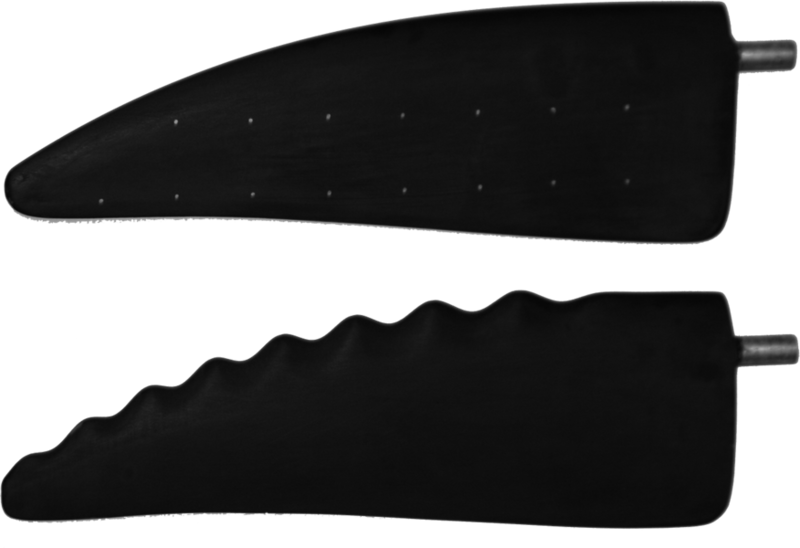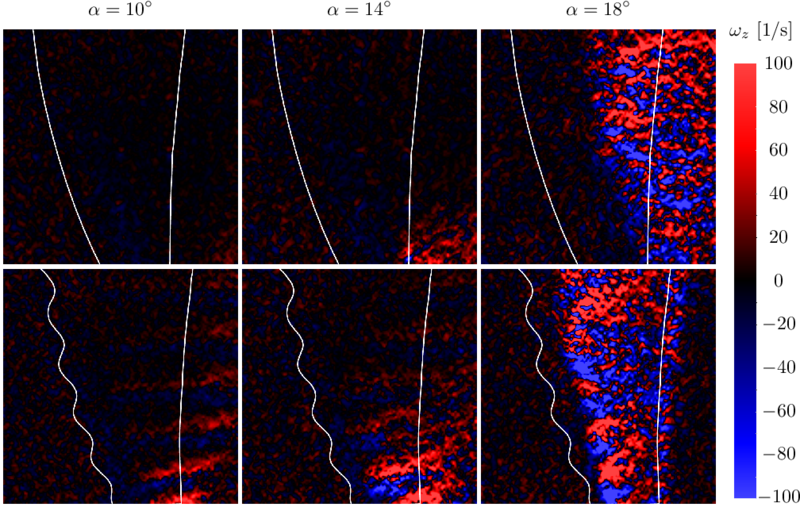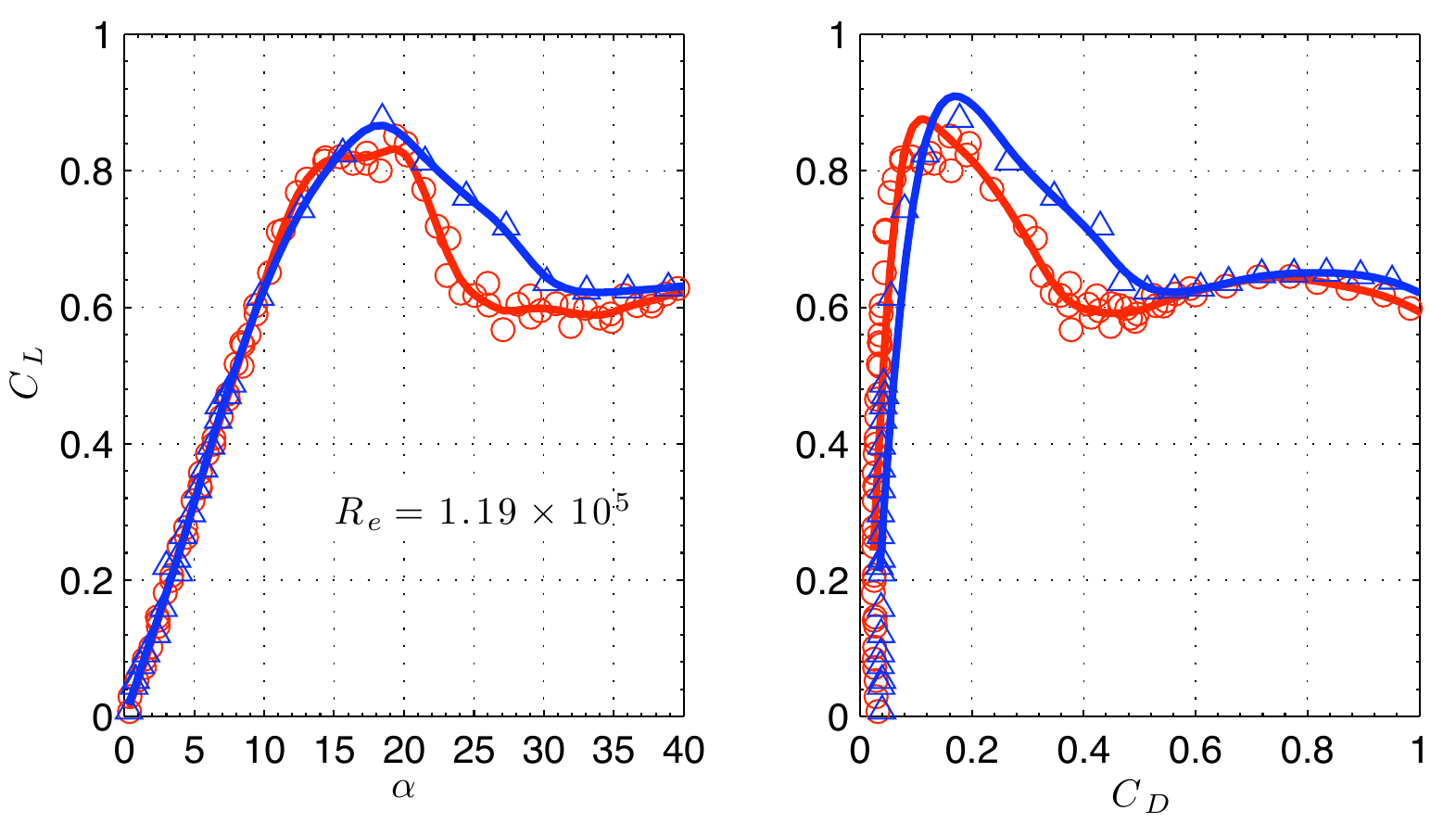Tubercles are the bumps on the leading edge of a humpback whale’s pectoral flipper – in the right flow conditions, they delay stall and increase the maximum lift the flipper can produce.
I studied this effect for my Master of Science in Ocean Engineering, with the help of my advisor, Prof. Alex Techet.

Experimental hydrofoils with smooth and bumpy leading edges.
After making hydrofoils with both bumpy and smooth leading edges to model the flipper with and without tubercles (Figure 1), we used particle image velocimetry (PIV) to visualize and measure the flow in a two-dimenstional plane near each foil, offset from the planform surface (Figure 2).

Velocity in the PIV plane along the planform surface of the foil. Note the separation indicated by areas of low velocity.
We observed vortical structures produced by the tubercles that help keep the flow attached with increasing angle of attack. These vortices come in alternating pairs along the span of the bumpy foil, corresponding to the peaks and troughs of the tubercles (Figure 3).

Vorticity normal to the PIV plane along the planform surface of the foil.
We also used a load cell to measure the forces & torques on the model flippers, confirming the increased lift and delayed stall that had been observed in previous studies, but also noting that the advantage decreases, then disappears, at lower Reynolds numbers.

Measured lift coefficient vs. angle of attack and drag coefficient for smooth foil (red circles) and bumpy foil (blue triangles).
The second part of my Master’s thesis explored the effect of tubercles in flapping foil propulsion, and found that the tubercles degraded performance, likely because the same vortices that organize the planform flow and help keep it attached downstream of tubercles run roughly perpendicular to the vortices from flapping, and break up the thrust-producing wake.
Tubercles:
generate alternating pairs of vortical structures that organize the planform flow field
delay stall and increase lift, providing more advantage at higher Reynolds numbers
slides:
Spanwise visualization of flow around a three-dimensional foil with leading edge protuberances
Hydrodynamic effects of leading-edge tubercles on control surfaces and in flapping foil propulsion
thesis:
